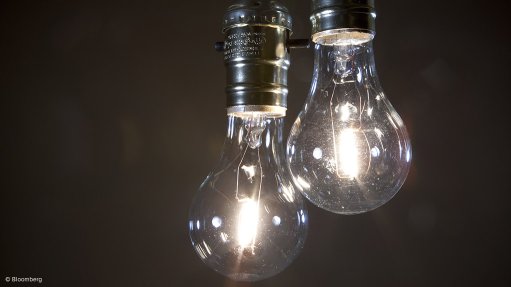
Photo by: Bloomberg
The National Energy Regulator of South Africa (Nersa) has approved, in principle, power utility Eskom’s application for a proposed generation capacity charge (GCC), but adjusted to reduce the financial impact on below-average users.
Under the now approved plan, 20% of the proposed level will be charged in year one, with 30% of the proposed level being added in years two and three respectively.
Moreover, a separation of the legacy charge is expected to account for costs from independent power producer (IPP) contracts.
“The approved changes aim to create a more transparent and equitable tariff structure while addressing stakeholder concerns. The fixed service charge will be phased in over three years and the allocation towards the proposed GCC was reduced to 20% in year one to prevent steep price hikes,” Nersa acting regulator member responsible for electricity regulation Nomfundo Maseti said on February 24.
She stated that these changes, based on an analysis of Eskom’s retail tariff plan (RTP) application, aim to enhance cost-reflectiveness, transparency and fairness in pricing.
Key decisions from Nersa’s meeting on February 18 include adjustments to time-of-use (ToU) charges. According to Nersa, the ToU periods and rates have been modified to align better with system requirements and customer needs.
Peak period adjustments include a reduction of the high season morning peak to two hours from 06:00 to 08:00, while the evening peak increases to three hours from 17:00 to 20:00.
In the low season, the morning peak is set at two hours from 07:00 to 09:00 and the evening peak at three hours from 18:00 to 21:00. The peak-to-standard ratio has been changed from 1:8 to 1:6, and Sunday evening standard hours have been adjusted from 17:00 to 19:00.
Municipal tariff rationalisation has also been introduced to consolidate multiple municipal tariffs into three categories: Municflex for large power users (LPU), MunicRate for small power users (SPU) and public lighting.
In residential tariffs, cost-reflective tariffs (Homepower and Homeflex) have been introduced, with the fixed service charge phased in over three years. The inclining block tariff (IBT) structure has been removed for Homepower and Homelight tariffs, simplifying pricing and benefiting low-consuming customers.
Further, network charges have been split into fixed and variable components for cost-reflectiveness.
Service charges have been converted to be based on the number of points of delivery (PODs) to better ensure fairness and accurate cost allocation. The affordability subsidy in generation wheeling and generation offset has been removed to ensure all users contribute fairly to inter-tariff subsidies.
Transmission loss factors for generators have been adjusted to align with current network configurations, preventing Eskom from overcompensating certain generators in negative-loss-factor zones. ![]()